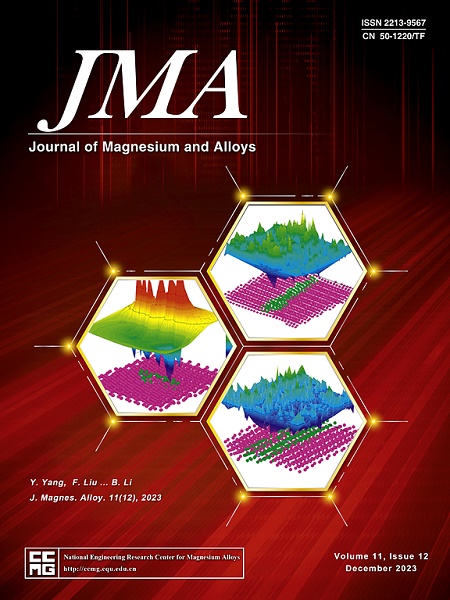Significant improvement of Jc and flux pinning force of MgB2 by doping NTE-ZrW2O8 particles
IF 13.8
1区 材料科学
Q1 METALLURGY & METALLURGICAL ENGINEERING
引用次数: 0
Abstract
Although introducing second phase particles as additional pinning centers is an effective method to improve the current carrying capacity of MgB2, the thermal strain caused by second phase particles in MgB2 and their impact on flux pinning have not received much attention. In this paper, flux pinning behavior of the thermal strain induced by the second phase particles in the MgB2 bulk materials was studied by doping ZrW2O8 particles which have negative thermal expansion (NTE) characteristics. Due to the significant difference in thermal expansion characters between ZrW2O8 and MgB2, drastic thermal strain was induced in the lattice of MgB2 by doping the NTE-ZrW2O8 particles. These strains work as additional flux pinning centers and significantly enhance the irreversibility field, Hirr, and critical current density, Jc, of the MgB2. Taking Jc as an example, at 4.2 K and 5 T, its Jc value reaches 4.1 × 104 A/cm2, which is a 105 % performance improvement compared to the 2.0 × 104 A/cm2 of the pure MgB2 sample W-0; at 20 K and 2 T, its Jc also reaches 1.3 × 105 A/cm2, which is 1.78 times of the 7.3 × 104 A/cm2 for the pure MgB2 sample under the same conditions. It is interesting that doping ZrW2O8 does not significantly change the scaling behavior of the pinning force, indicating that the lattice strain work like surficial pinning center, while the point defect pinning center initiated by ZrW2O8 particles themselves may only contribute to the high field region, causing the peak in the pinning force scaling curve to shift towards higher fields.

NTE-ZrW2O8颗粒的掺入显著提高了MgB2的Jc和磁钉力
虽然引入第二相颗粒作为附加钉接中心是提高MgB2载流能力的有效方法,但MgB2中第二相颗粒引起的热应变及其对焊剂钉接的影响尚未得到重视。本文通过掺杂具有负热膨胀(NTE)特性的ZrW2O8颗粒,研究了第二相颗粒在MgB2块体材料中引起热应变的通量钉钉行为。由于ZrW2O8与MgB2的热膨胀特性存在显著差异,掺杂NTE-ZrW2O8粒子在MgB2晶格中诱发了剧烈的热应变。这些菌株作为额外的通量固定中心,显著提高了MgB2的不可逆性场Hirr和临界电流密度Jc。以Jc为例,在4.2 K和5 T下,其Jc值达到4.1 × 104 A/cm2,与纯MgB2样品W-0的2.0 × 104 A/cm2相比,性能提高了105%;在20 K和2 T条件下,其Jc也达到1.3 × 105 A/cm2,是相同条件下纯MgB2样品7.3 × 104 A/cm2的1.78倍。有趣的是,掺杂ZrW2O8并没有明显改变钉住力的缩放行为,说明晶格应变像表面钉住中心一样起作用,而ZrW2O8颗粒本身引发的点缺陷钉住中心可能只对高场区起作用,导致钉住力缩放曲线的峰值向高场偏移。
本文章由计算机程序翻译,如有差异,请以英文原文为准。
求助全文
约1分钟内获得全文
求助全文
来源期刊

Journal of Magnesium and Alloys
Engineering-Mechanics of Materials
CiteScore
20.20
自引率
14.80%
发文量
52
审稿时长
59 days
期刊介绍:
The Journal of Magnesium and Alloys serves as a global platform for both theoretical and experimental studies in magnesium science and engineering. It welcomes submissions investigating various scientific and engineering factors impacting the metallurgy, processing, microstructure, properties, and applications of magnesium and alloys. The journal covers all aspects of magnesium and alloy research, including raw materials, alloy casting, extrusion and deformation, corrosion and surface treatment, joining and machining, simulation and modeling, microstructure evolution and mechanical properties, new alloy development, magnesium-based composites, bio-materials and energy materials, applications, and recycling.
 求助内容:
求助内容: 应助结果提醒方式:
应助结果提醒方式:


